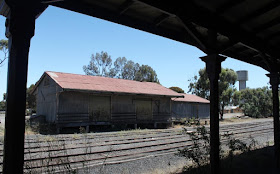The culmination of 'History is a story' month, will be the "Searching for Ancestors : family history seminar" which is a unique opportunity to have renowned presenters speaking to local audiences.
The seminar will provide practical information and guidance to use in your current or future family history and local history projects.
The presenters are:
Eric Kopittke has been researching his family history in Australia, Germany, England and Wales since 1985. Eric joined the Queensland Family History Society in 1985, and has been convenor of its Central European Group for over 20 years. He is also President of the Baptist Historical Society of Queensland.
Academically, he studied at the University of Queensland where he was awarded a Bachelor of Science (Physics and Mathematics), a Bachelor of Arts (Geography and Computer Science) and a Diploma of Education. He recently retired from teaching Physics and Mathematics at St Peters Lutheran College, Indooroopilly.
Eric regularly speaks at family history societies and at other events as his teaching commitments allow.
At the ‘Searching for Ancestors family history seminar’ Eric will be presenting:
 Emigration from Germany to Australia - How to use records from Australia and elsewhere to determine your German ancestor’s place of origin, and an overview of the Hamburg Emigration lists – direct and indirect – why these are useful
for researching your European ancestors.
Emigration from Germany to Australia - How to use records from Australia and elsewhere to determine your German ancestor’s place of origin, and an overview of the Hamburg Emigration lists – direct and indirect – why these are useful
for researching your European ancestors.
Researching German civil & church records - Prior to the introduction of civil registration, church records provided details of baptisms, marriages and burials. German records often give far more detail than their English
equivalents. Discover how to locate and use German civil registration records, unlike Australian and British records, German civil registration was not centrally located nor did all regions begin at the same time.
Rosemary Kopittke has been researching her families in Australia, England and Scotland since 1985. That year she joined the Queensland Family History Society and has held many positions within the society.
Her academic qualifications include a Bachelor of Science (Mathematics) and Bachelor of Arts (Computer Science) at the University of Queensland and she has completed the Certificate of Genealogical Studies (English Records) with the National Institute for Genealogical Studies. Though trained as a statistician, she currently works as a part-time consultant
for Gould Genealogy & History and Unlock the Past.
Rosemary’s topics at the ‘Searching for Ancestors family history seminar’ are:
Using Directories & Almanacs for family history - A look at the wide range of directories and almanacs available and why you should use them when compiling your family history.
Tracing your ancestors in England - An overview of basic resources – civil registration, church records, census, cemetery records, directories, elector registers, maps, newspapers and wills - including many examples and covers a variety of ways of accessing the data – free and subscription.
Alan Phillips has been a publisher and re-seller of a wide range of historical and genealogical resources since 1976, trading now as Gould Genealogy & History. Gould Genealogy brought leading publishers from the UK and US to Australia in 2003 for a national roadshow to 6 cities around the country. One result was the establishment of Archive Digital Books Australia, part of an international network of Archive CD Books publishers bringing a wide range of historical resources to researchers, societies and libraries. Alan has spoken widely around Australia and here will be speaking on:
Getting the most from Gould Genealogy and Unlock the Past – Gould & Unlock the Past resources and services for family and local historians.
There will be an exhibition by Gould Genealogy & History, and Unlock the Past, with special offers & prizes, along with opportunities to purchase discounted Gould books and materials.
The seminar is intended for those interested in family or local history - or any form of history; and those who might be encouraged to research and record their personal or family/local history; and writers who are interested in developing more skills and ideas for historical writing.
 |
| The Shire of Wimmera honour board in the Conference Room |
It will be held on Saturday 31st October 2015 from 9:30am to 4:30pm at the Horsham RSL Conference Room (next to the Horsham Library) 36 McLachlan Street, Horsham.
Parking is available in the RSL and Mibus Centre carparks.
The cost will be $20:00 for Advance bookings and $25:00 for bookings made on the day. For the price you get a 2 course lunch at the RSL’s ‘Bistro on McLachlan’, with morning and afternoon tea and a day full of inspiring talks.
Bookings are essential and need to be made at the Horsham Library, Mibus Centre, 28 McLachlan Street in Horsham. Inquiries: Phone 03 5382 5707.

















































